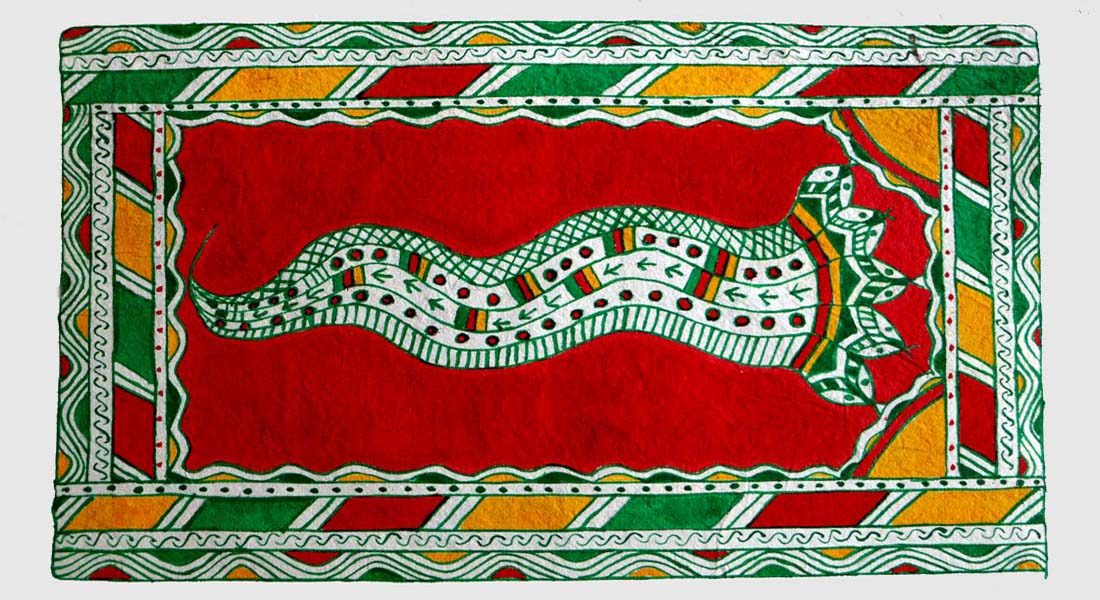Manjusha art is the folk art of “Ang Pradesh” whereas Madhubani painting is of the Darbang Pradesh.
This art was earlier done by only two families the Kumbhakar caste and the Malakar caste. The Kumbhakar caste used to make the pots on which the Manjusha art is painted and worshipped during the festival. The Malakar caste makes the actual “manjushas” and paints the Manjusha art on these structures. There is another caste called the Kashira caste, they used to make the pots out of “peetal”/brass. There are only two families left who still practice this art.
Earlier the Pandit family Cheddhi and Basant Pandit used to make the Manjusha art for the temple, for this service all their expenses were taken care of by the village.
This art has been prevalent in Bhagalpur for a long time but between 1931 – 48, it was brought to the forefront. In this period during the British rule, an ICS officer by name W.G. Archer and his wife started finding out more about Madhubani painting and Manjusha art. He fell in love with the art form. W.G.Archer put a collection together of Manjusha art and had an exhibition in The India Office Library in London which became part of the Archer Collection. It was at this time that Manjusha art gained international recognition. But at that time due to British rule, the artisans could not flourish.
But, Manjusha art seemed to be fading away in the background and was being practiced only by some people. In 1984 the Bihar government made an initiative called “Jansampoorna Vibagh” in which they went to the villages of Bhagalpur and showed them slideshows of Manjusha art and educated people about this traditional art form in the hope of reviving it. After which Smt. Chakravarty Devi and Jyotish Chand Sharma came into the picture and helped revive this craft. Smt.Chakravathy Devi was one of the most traditional artisans and belonged to one of the two families who have started this art. She has worked tirelessly in reviving this craft. At the same time Smt. Nirmala Devi also started working in this field and has come to be known and honored for her efforts to revive this craft.
In 1992, an artisan name Mr.Manoj Pandit started experimenting with different materials and started painting on silk and other fabrics which helped take this art to the next level. From being just art done for religious purposes, the artisans were able to use it in products more suited to the market.
The Bihar government has been making a lot of effort to revive this craft and many skill up-gradation training has taken place both in Bhagalpur as well as in the nearby villages. They have made a good effort in trying to make people aware of this craft. They have taken certain moves like it is mandatory that all the Zilla Parishad banks have to have a Manjusha painting hanging in their banks, which automatically provides the artisans with some kind of market.
Recently the Bihar government has put together a committee that comprises 11 people out of which 4 artisans will be present to apply for a patent for the Manjusha art form. They are planning to patent it as a Bhagalpur folk art.
—
Courtesy: UMSAS, Patna. Texts partially edited.
—
Folkartopedia welcomes your support, suggestions and feedback.
If you find any factual mistake, please report to us with a genuine correction. Thank you.

